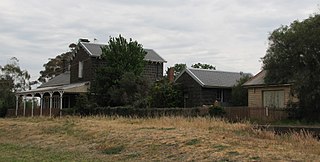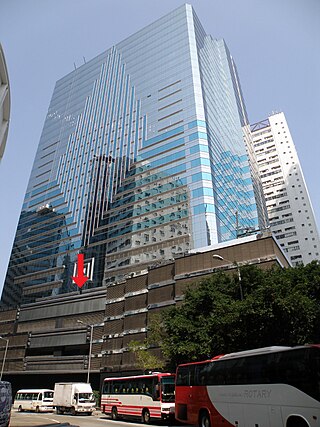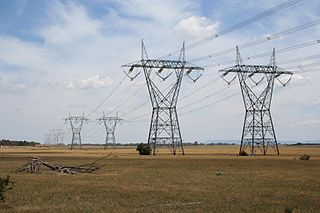
Geelong is a port city in Victoria, Australia, located at the eastern end of Corio Bay and the left bank of Barwon River, about 75 km (47 mi) southwest of Melbourne. With an estimated population of 282,809 in 2023, Geelong is the second largest city in the state of Victoria. It is the administrative centre for the City of Greater Geelong municipality, which is Port Phillip's only regional metropolitan area, and covers all the urban, rural and coastal reserves around the city including the entire Bellarine Peninsula and running from the plains of Lara in the north to the rolling hills of Waurn Ponds to the south, with Corio Bay to the east and the Barrabool Hills to the west.
James Harrison was a Scottish Australian newspaper printer, journalist, politician, and pioneer in the field of mechanical refrigeration.

The City of Greater Geelong is a local government area in the Barwon South West region of Victoria, Australia, located in the western part of the state. It covers an area of 1,248 square kilometres (482 sq mi) and, had a population of 271,057 as of the 2021 Australian census. It is primarily urban with the vast majority of its population living in the Greater Geelong urban area, while other significant settlements within the LGA include Anakie, Balliang, Barwon Heads, Batesford, Ceres, Clifton Springs, Drysdale, Lara, Ocean Grove, Portarlington and St Leonards. It was formed in 1993 from the amalgamation of the Rural City of Bellarine, Shire of Corio, City of Geelong, City of Geelong West, City of Newtown, City of South Barwon, and parts of Shire of Barrabool and Shire of Bannockburn.

A gas holder or gasholder, also known as a gasometer, is a large container in which natural gas or town gas is stored near atmospheric pressure at ambient temperatures. The volume of the container follows the quantity of stored gas, with pressure coming from the weight of a movable cap. Typical volumes for large gas holders are about 50,000 cubic metres (1,800,000 cu ft), with 60-metre-diameter (200 ft) structures.

North Geelong is a suburb of Geelong in the Australian state of Victoria. The suburb was bypassed by traffic from Melbourne coming from the Princes Freeway by the creation of the Geelong Ring Road, which was complete in 2009. At the 2016 census, North Geelong had a population of 2,966.

Bannockburn is a town near Geelong, Victoria, Australia, 88 km southwest of Melbourne. It is located in Golden Plains Shire. In the 2021 census, Bannockburn had a population of 6,470.

Asaluyeh is a city in the Central District of Asaluyeh County, Bushehr province, Iran, serving as capital of both the county and the district. It also serves as the administrative center for Asaluyeh Rural District.

The Hong Kong and China Gas Company Limited, trading as Towngas, is the sole provider of territory-wide town gas in Hong Kong. Founded in 1862, it is one of the oldest listed companies in the territory.
The Gas and Fuel Corporation of Victoria (G&FC) was a government-owned monopoly supplier of household gas in Victoria, Australia. It was established in 1950 and took over two of the three main gas utilities in Melbourne – the Metropolitan Gas Company and the Brighton Gas Company. As part of the conversion to natural gas, in 1971 the corporation acquired the Geelong Gas Company, one of only two remaining private gas companies in Victoria at the time. The Ballarat Gas Company closed at the time. The G&FC was wound up in June 1995.

Beckton Gasworks was a major London gasworks built to manufacture coal gas and other products including coke from coal. It has been variously described as 'the largest such plant in the world' and 'the largest gas works in Europe'. It operated from 1870 to 1976, with an associated by-products works that operated from 1879 to 1970. The works were located on East Ham Level, on the north bank of the Thames at Gallions Reach, to the west of Barking Creek.

Energy in Victoria, Australia is generated using a number of fuels or technologies, including coal, natural gas and renewable energy sources. Brown coal, historically, was the main primary energy source for the generation of electricity in the state, accounting for about 85% of electricity generation in 2008. The amount of coal-fired power has decreased significantly with the closure in 2017 of the Hazelwood power station which supplied around 20% of Victoria's electricity, and to a lesser extent with the exit of Anglesea power station in 2015. Brown coal is one of the largest contributors to Australia's total domestic greenhouse gas emissions and a source of controversy for the country. Australia is one of the highest polluters of greenhouse gas per capita in the world.

The Gas Light and Coke Company, was a company that made and supplied coal gas and coke. The headquarters of the company were located on Horseferry Road in Westminster, London. It is identified as the original company from which British Gas plc is descended.

The history of gaseous fuel, important for lighting, heating, and cooking purposes throughout most of the 19th century and the first half of the 20th century, began with the development of analytical and pneumatic chemistry in the 18th century. These "synthetic fuel gases" were made by gasification of combustible materials, usually coal, but also wood and oil, by heating them in enclosed ovens with an oxygen-poor atmosphere. The fuel gases generated were mixtures of many chemical substances, including hydrogen, methane, carbon monoxide and ethylene. Coal gas also contains significant quantities of unwanted sulfur and ammonia compounds, as well as heavy hydrocarbons, and must be purified before use.
The United Kingdom's National Transmission System (NTS) is the network of gas pipelines that supply gas to about forty power stations and large industrial users from natural gas terminals situated on the coast, and to gas distribution companies that supply commercial and domestic users. It covers Great Britain, i.e. England, Wales and Scotland.
City Energy Pte Ltd, formerly known as City Gas Pte Ltd, founded as Singapore Gas Company in 1861, is the producer and retailer of piped town gas in Singapore. It is a fully owned subsidiary of Keppel Corporation.

The Launceston Gasworks is a former industrial site located in the CBD of Launceston, Tasmania. The site was the principal supplier of gas to the City of Launceston before the importation of LPG in the 1970s. The gasworks produced gas by heating coal and siphoning off the gas that it released before refining and storing it on site in a set of 3, steel frame gasometers. The first buildings on site were the horizontal retort buildings built in 1860 from sandstone and local brick. The site was later used by Origin Energy as their Launceston LPG outlet. The site is instantly recognizable by its 1930s, steel braced, vertical retort building with the words "COOK WITH GAS" in the brickwork.

Southall Gas Works is a former gas works site of around 88 acres (36 ha) in Southall, west London, which is currently being redeveloped for mixed-use including 3,750 homes as part of Berkeley Group's The Green Quarter.

Newstead Gasworks is a heritage-listed former gasometer at 70 Longland Street, Teneriffe, City of Brisbane, Queensland, Australia. It was built from 1873 to 1887. It is also known as Brisbane Gas Company Gasworks and Newstead Gasworks No.2 gasholder. It was added to the Queensland Heritage Register on 24 June 2005.

The Gasworks building in Bydgoszcz, Poland, is a historical edifice built between 1859 and 1860. It has also been known as the Bydgoszcz District Gas Plant and as Pomeranian Gas Company, Branch Gas Plant of Bydgoszcz. In 2003, it became part of the Polska Spółka Gazownictwa, as a branch called Gas Plant in Bydgoszcz.

The Windsor Street Gasworks was a coal gas and coke manufacturing site in Nechells, Birmingham. The works were constructed in 1846 for the Birmingham Gas Light and Coke Company adjacent to the Birmingham and Fazeley Canal to allow for the bulk import of coal. The company was taken over by the Birmingham Corporation in 1875 and under mayor Joseph Chamberlain and engineer Charles Hunt the Windsor Street site was expanded and connected to the London and North Western Railway. Hunt's works included the construction, in 1885, of gasholders No. 13 and No.14, the largest in the world at that time, as well as modernisation of production.
















